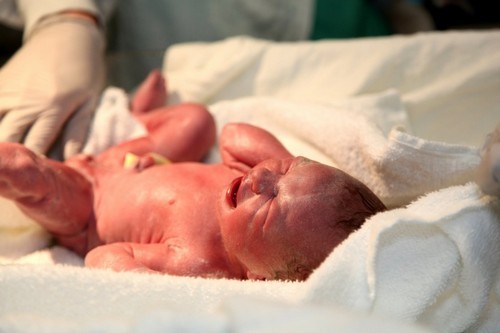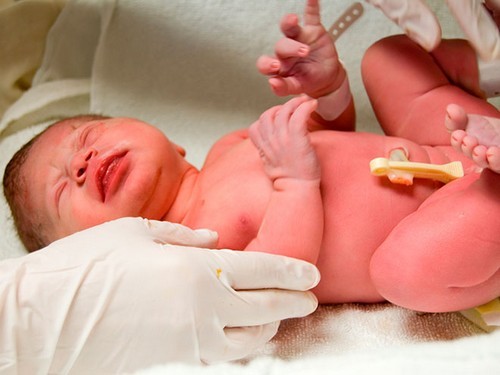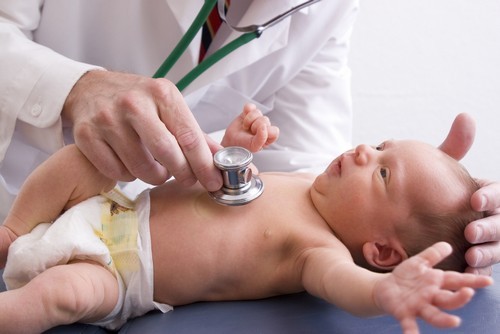For over 60 years, our newborn babies have passed their first exam – an assessment of their condition on the Apgar scale. What is it and what is it for?
62 years ago in 1952, Virginia Apgar, the first American female professor, master of health, director of the National Fund for Birth Defects Division, proposed a 10-point system for assessing the condition of newborns in the first minute of life – “Apgar Assessment of a Newborn”.
Each criterion is evaluated by the number of points from 0 to 2. The sum of the points determines the state of the child at a certain moment and ranges from 0 to 10.
For ease of remembering the evaluation criteria, I used the initial letters of my surname:
- A – the appearance of the child (skin color);
- P – the pulse of the child (heart rate);
- G- grimace, (reaction in response to an irritant);
- A – activity and muscle tone of the baby;
- R – respiratory movements of the child.
The Apgar rating carries complete information about the child and is intended primarily for the doctor of the hospital to be able to quickly respond and determine which of the kids needs emergency assistance in emergency medical procedures, or just more careful attention.

Scoring Methodology
The number of points gives an estimate and summarizes the baby’s reaction in the first minute of life (in an ectopic environment) – the restoration of violations of important body functions, measures aimed at restoring a possible failure of heart contractions, and respiratory failure during childbirth. Each of the five criteria is assigned points – 0, 1 or 2 points. The best total score is – 8, 9, and 10 points.
Assessment on this scale is determined at the first and fifth minute after childbirth. Therefore, there are always two of them – for example, 7/8 or 8/9 points. Usually, by the fifth minute, the baby can add up to 2 points.
If the total score in the fifth minute of a child’s life does not exceed -7, a control examination is carried out every 5 minutes within 20 minutes.
- The Apgar result score of 7, 8, 9, and 10 points characterizes the condition of the newborn without visible pathologies. The maximum mark – 10 gets very few children, mostly – 7/8 and 8/9 points. The second mark, awarded by the fifth minute, is usually 1, 2 points higher, although not always. She can remain, for example – 8/8 or 9/9. Such children are immediately applied to the mother’s breast and given under her care.
- The condition of newborns estimated at 6 points is evidence of unsteady breathing, decreased muscle tone, poor response to stimuli with a pulse rate of 100 beats / min and more. This condition is evidence of a moderate degree of asphyxia (lack of oxygen). The condition estimated by 6 points is considered satisfactory, but requiring certain therapeutic measures.
- Emergency resuscitation care – measures to prevent the development of complications or save lives, the condition of which is required for babies, estimated from 4 to 6 points.
- The result according to this system in the first minute of birth is from 0 to 3 points, evidence of a slow heart rate, changes or lack of breathing, the skin is pale, muscle atony is noted. This condition is the result of severe asphyxiation.
A low Apgar score of 3 to 6 is due to the fact that the child has an acute lack of oxygen, and this is evidence of the presence of chronic hypoxia, which formed during pregnancy, or oxygen starvation that occurred during childbirth.

The cause of chronic hypoxia may be:
- Pregnancy pathology;
- Possible malformations of the fetus.
The cause of acute hypoxia is a varying degree of complication during childbirth.
Not always a low assessment of the criterion can lead to disastrous results. Positive dynamics in the state of the baby, according to the Apgar scale, allows us to hope for a positive result. If within five minutes the baby adds 1 or 2 points, which will raise the indicator, at least to 6, he has a chance to get out. In the majority, such children are quite normal and healthy, only some may need treatment or observation by a neurologist.
Premature babies have a lower criterion score than full-term babies and it rarely exceeds 6 points. But do not be upset by the lack of 9 or 10 points, because this test is purely preliminary, and is mainly intended for medical analysis. And the further development of the child depends only on the attention and care of the parents.
Causes of adverse events
Severe conditions of newborns are caused not only by the presence of asphyxiation during childbirth or immediately after them.
They can be the result of many other factors – injuries or infections.
- A mild form of brain damage – “neuro-reflex excitability syndrome”, is evaluated on the Apgar scale of 7 points
- The moderate severity is “central nervous system depression syndrome”, and “hypertension-hydrocephalic syndrome” is estimated from 6 to 7. Unfavorable factors during pregnancy and childbirth can serve as the cause.
- Severe CNS lesions cause coma and convulsive syndromes, and certification on this scale = 1/4 units. Such children are transferred from the hospital to the hospital and only with persistent improvement with a score of 7, they are discharged home under the supervision of a pediatrician and a neurologist.
Most children with 6/7 scores who have had a mild, moderate or even severe form of the perinatal form of encephalopathy, with proper care, completely restore the central nervous system. So, the low, initial Apgar score is not a cause for panic.
Assessment of criteria – from heart to skin color
Heart work
The heart of the baby works more intensively than in an adult. Heart rate, ideally 130 / min, 140 / min. This work of the heart is estimated at 2 points. Slowing the heartbeat – 1, in the absence of a heartbeat or single manifestations = 0.

Heart rate (HR) is determined within six seconds in the first minute of a child’s life.
Method:
- listening;
- palpation – palpation of the chest to determine the heartbeat;
- palpation of the pulse on the femoral, carotid or umbilical arteries.
The result of contractions of the heart, determined in six seconds, is multiplied by the number – 10, and the number of contractions per minute is determined.
- Children who have a heart rate of less than 100 beats per minute receive artificial ventilation of the lungs with oxygen until their heart rate normalizes.
- With a result of heart rate in excess of 100 / sec. – assesses the condition of the skin.
Respiration rate
With normal breathing, the child makes from 40 to 45 respiratory-expiratory movements per minute. The scream is piercing and loud, in this case the baby earns +2 points. With slow and irregular breathing, a low cry or a groan instead, the child earns a unit. In the absence of both, certification = 0.
- If the child has no breathing, in the conditions of the maternity operating room, in order not to lose precious time, they use the Ambu bag to make ventilation of the lungs – a mask is applied to the mouth and nose, and air is manually pumped into the baby’s lungs with the rubber bag. Having provided first aid and stabilized the child’s breathing, he is transferred to a rehabilitation unit.
- With convulsive, shallow, or irregular breathing, a lung ventilation procedure is performed. In such non-standard situations, high-9/10 indicators are not discussed.
- If breathing is independent and regular, heart rate and Apgar readings are evaluated. It can be indicators 7/8 or 8/9.
Assessment of muscle tone
If everything is normal with the newborn, having just been born, he seeks to get rid of the pose of the “embryo” and, feeling freedom, actively waves his arms – he gets 2 treasured points.
It is possible that they will increase his indicators to a score of 9/9 or even to 9/10. With bent arms and legs, weak and rare movements – 1 point, which on a scale is estimated as 4/6 or 6/7, taking into account the heartbeat and respiratory rate. Lack of movement = 0 points.
Reflex Evaluation
Despite his helplessness, thanks to innate reflexes, the newly born baby already knows a lot. Explicit swallowing, sucking and grasping reflexes will add another 2 points to his piggy bank. This will bring him closer to the coveted 10 points. The absence of some reflexes or their insufficient severity is limited by a +1 rating, and the complete absence of reflexes = 0.
Skin color
Ideally, the pale pink or hot pink color of the newborn + 2 points. Thus, the combination of 2 points of all five indicators leads to the ideal option = 10 points.
The presence of bluish tint on the arms and legs is an indicator of hypoxia. Rating +1. Excessively pale skin with a bluish tint = 0.
The total score that the newborn has earned fits into the child’s card upon discharge from the hospital. It is an indicator for the local pediatrician to immediately pay attention to possible problems in the health of the baby. In accordance with these results, a vaccination schedule is drawn up and more focused medical care is provided.
Do not be upset about low rates. An Apgar rating of a newborn with a standard of 10 points is not an indicator of its development and an assessment of intellectual potential. Caring, love and attention will allow the child to receive excellent grades in the future, regardless of what he received in the hospital.
Good luck.



